At Doug’s Gym you couldn’t watch TV while walking the treadmill because there were no TVs—or treadmills. There were no ellipticals, no heart-rate monitors, no hot yoga. There was no air-conditioning. There were, however, dumbbells, kettlebells, and barbells—row after row of them—a few bench press set-ups and a leg press, a boxing ring, a heavy bag, and a handful of plug-in fans, most of which worked.
Situated on Commerce Street in Dallas, above the office of a working-man’s lawyer (“Traffic Tickets $45”) and across the street from the downtown police station where Jack Ruby shot Lee Harvey Oswald a year after the gym opened, Doug’s was a place frozen in time. Virtually nothing had changed since its first day in business. Three years ago, when photographer Norm Diamond wandered in and asked if he could take pictures, Doug Eidd, the then 86-year-old owner agreed, but added, “Photographers have come here before. You’re not going to find anything new.”
Of course, Diamond wasn’t looking for anything new. Quite the opposite.
His previous book had focused on the forlorn items he’d found at Dallas estate sales; at Doug’s he was attracted by the gym’s time-capsule quality, and by an old man who had dedicated his life to helping people change themselves. But six months later, in the spring of 2018, as it became clear that the neighborhood itself was changing, the landlord saw an opportunity to sell the building to a developer. After 55 years, Doug’s closed. And when that happened, Diamond found something else: a quiet reminder that regardless of how hard we push and how tight our grip, we must, eventually, let go.
Diamond’s new collection, Doug’s Gym: The Last of Its Kind (Kehrer Verlag, February 18), is a bighearted photo book that walks the line between elegy and celebration. Here are twelve of the book’s most memorable photos and the stories behind them.
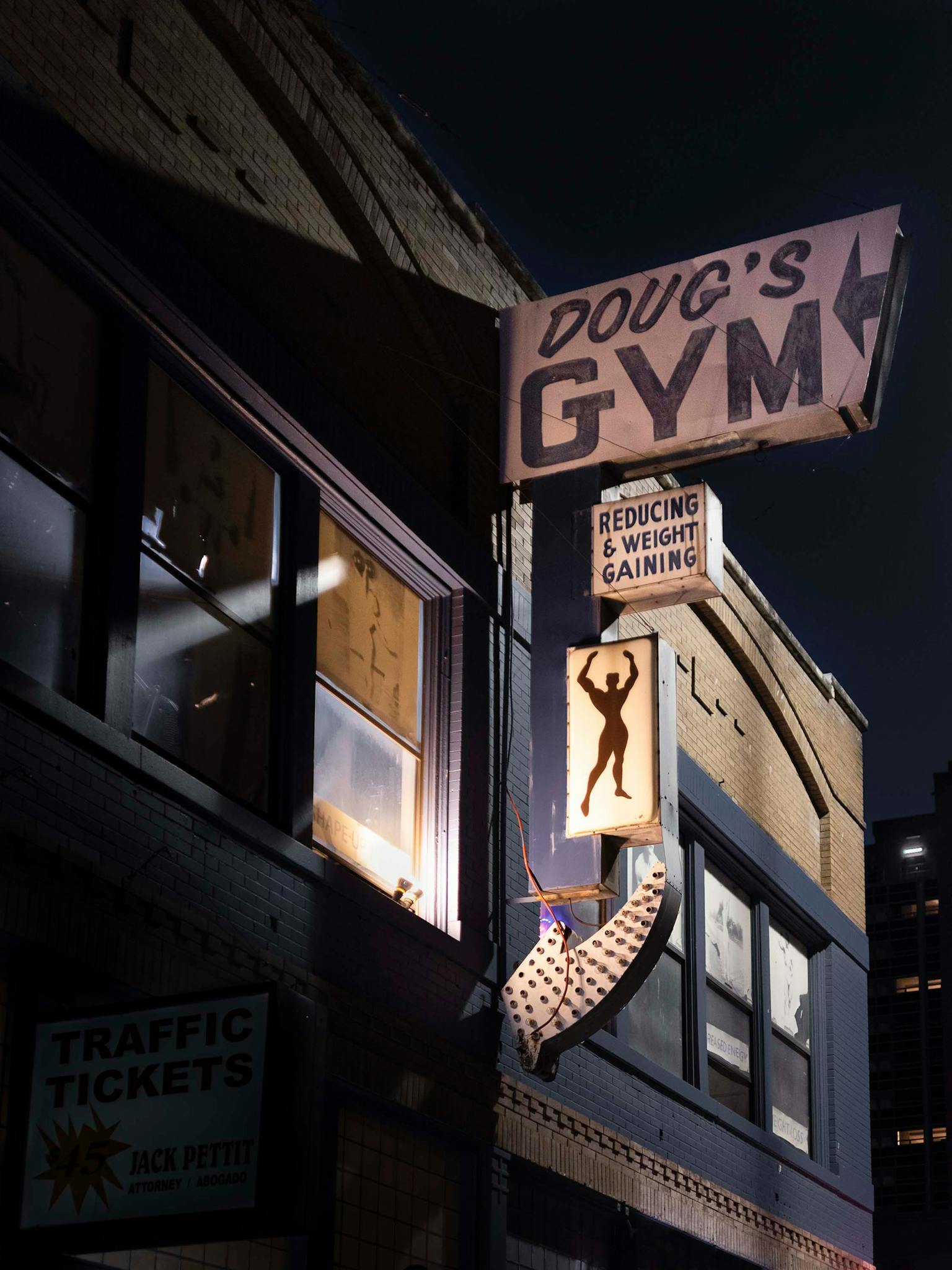
Doug’s Gym was recognized, when it was at all, by its vintage sign with the out-of-step promise of “Reducing & Weight Gaining.” It was this sign, in fact, that originally caught Diamond’s eye. But when he first walked up the gym’s sagging steps, the last thing on his mind was building muscle and losing weight. The truth is, Diamond was feeling a little lost. He’d recently retired from a career as a doctor specializing in interventional radiology and was, in his words, “still coming to grips” with thirty years of seeing people in terrible and often incurable situations. The gym’s peeling paint and dark corners spoke to him—about years passing by, about mortality, and about our ability to change. And so three times a week for six months he photographed a gym tinged with cigar smoke and sheltered from time.
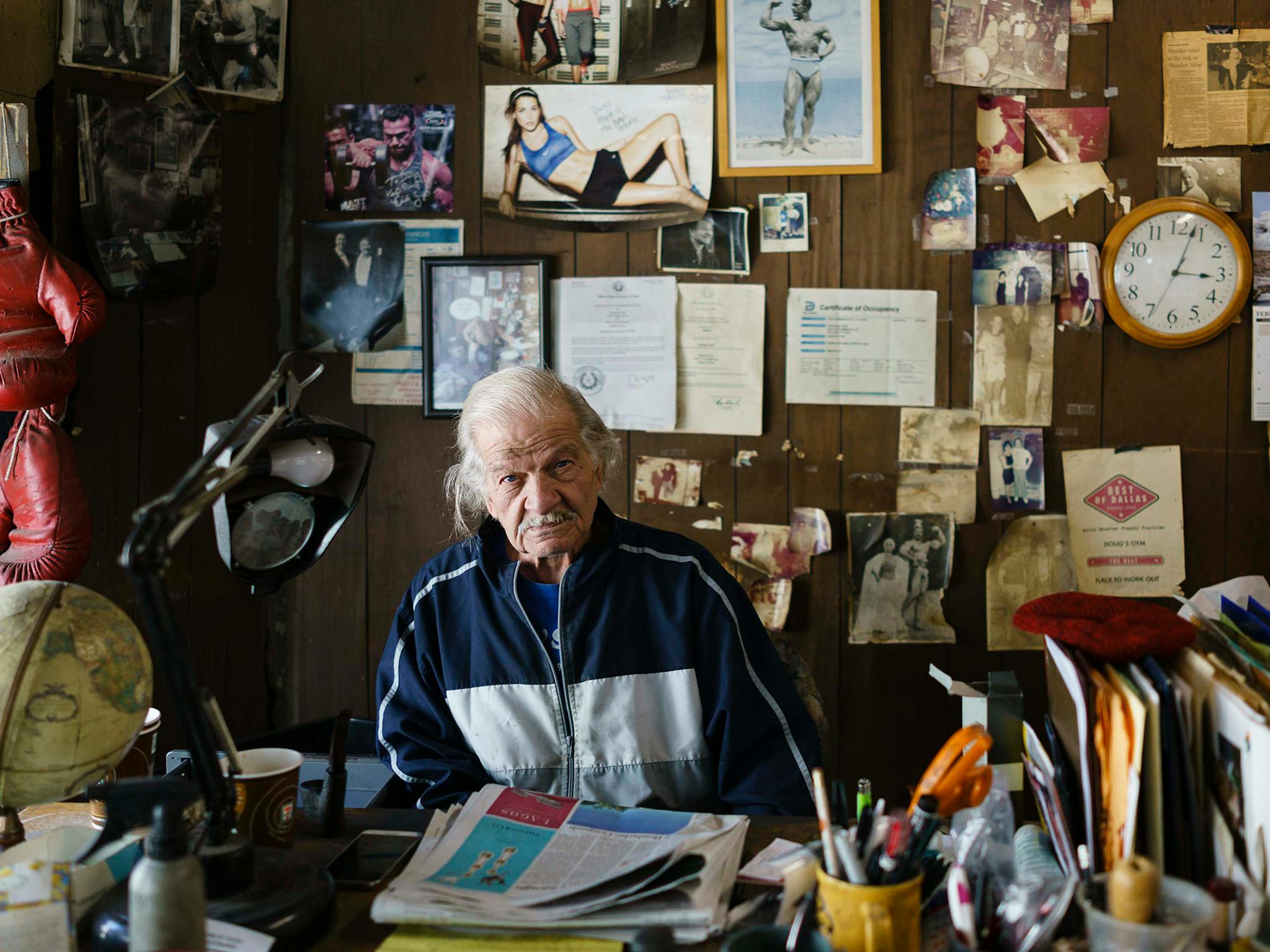
Eidd, a Houston native, opened his gym in September of 1962. He had served in the Korean War as a physical therapist, helping rehabilitate wounded soldiers. “He told me his whole thing was to make people fit for the rest of their lives,” says Diamond. “He believed in the ability to change, to improve. That's what he cared about.” Eidd did not care about interior design: nothing in the gym had been updated since he moved in. Those faded letters and magazine rip-outs on the wood-paneled wall behind him? The snippets of Scotch tape, older than some of his clients? The unbrushed hair? Those details make clear what wasn’t important to him, while that piercing gaze speaks to how he connected with people.
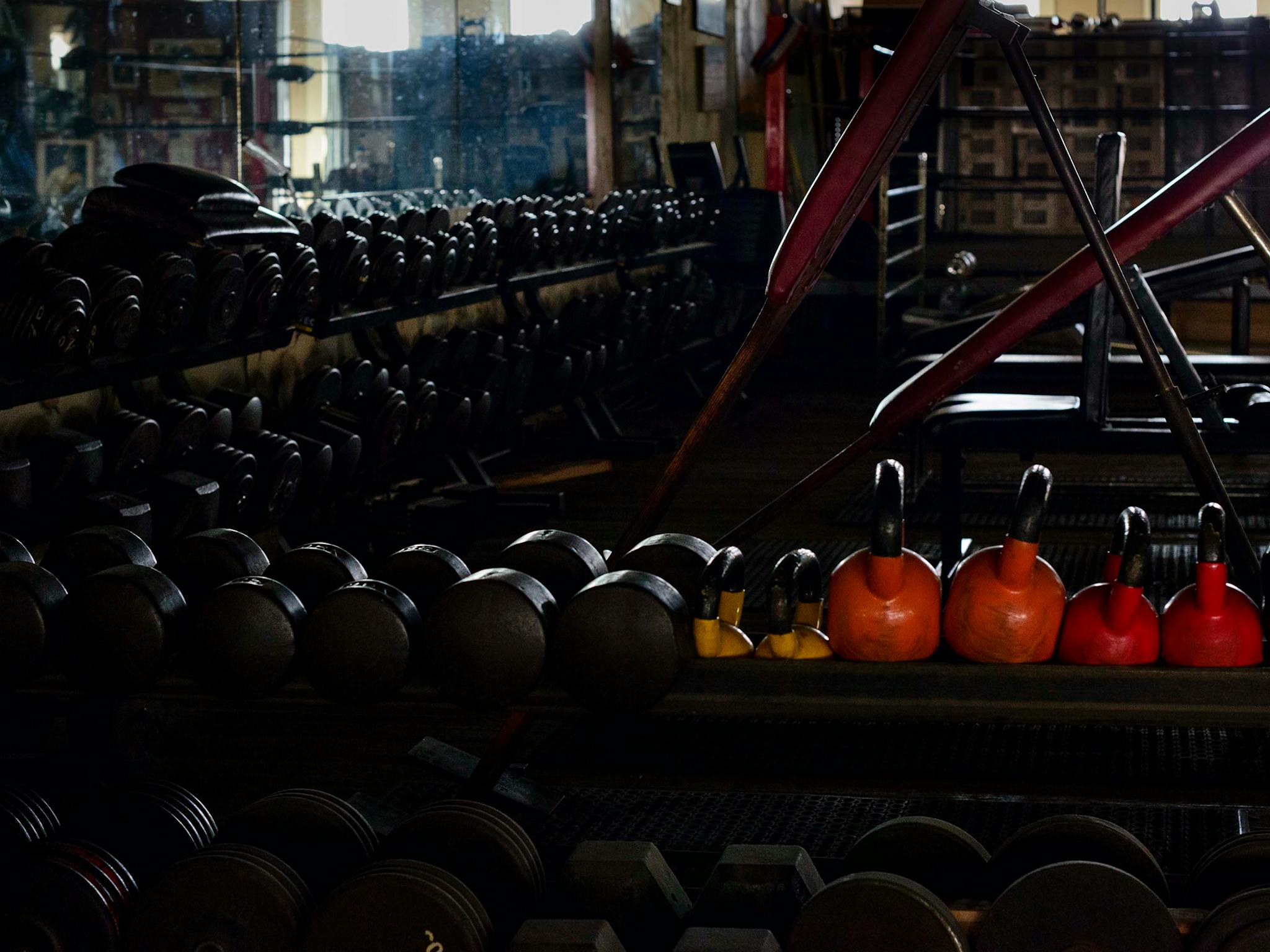
Compared with today’s bright, spare, high-tech gyms christened with internet start-up names like Telos and Paradigm, Doug’s was positively medieval: nothing white, nothing plastic; all leather, wood, and aged metal. This picture of a small sea of dumbbells hints at just how much weight was on the floor—12,000 to 15,000 pounds, by Eidd’s estimate. The light on those candy-colored kettlebells hits like a neon motel sign on a dark, lonely road.

Even during peak times, the gym rarely had more than fifteen or twenty people in it, but when it was empty, it took on an entirely different mood. With the fluorescents off and the sun backlighting the yellowed posters that served as window treatments, you can make out the rough flooring (“you wouldn’t walk on that with bare feet,” says Diamond), the almost architectural silhouettes of the equipment, and two fans. Barely visible in the far right window: a vintage vibrating belt once considered a state-of-the-art fat-reducing device.
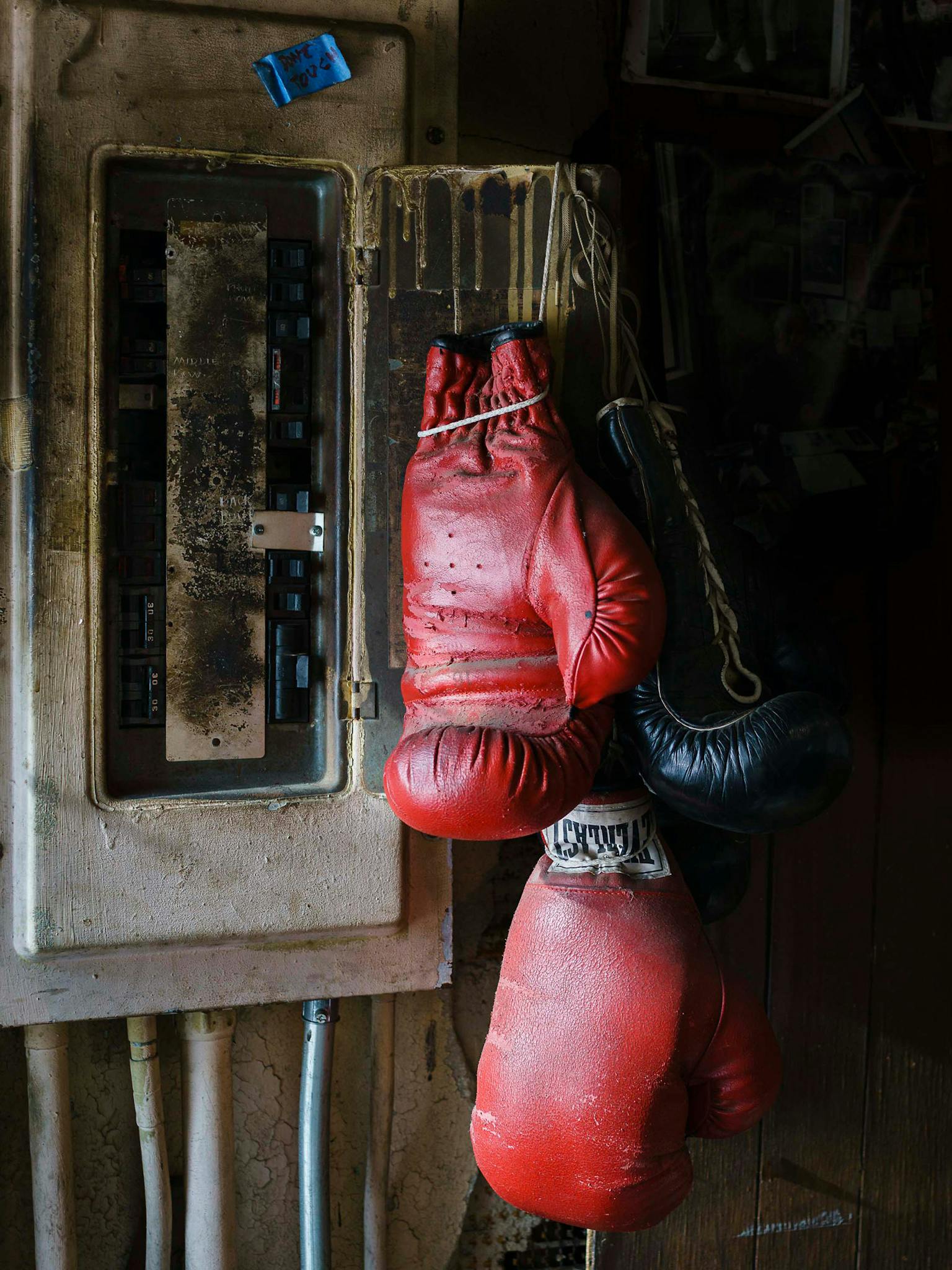
“This is pure Doug,” says Diamond, of the boxing gloves draped lazily over a fuse box that looks ready to short-circuit. (The little blue note reads: “Don’t Touch.”) The fuse box clung to the wall of Eidd’s office, and the gloves never left their perch. The leather and metal, the paint drips and pipes, the intense dark shadows and the glint of light on leather give this picture the feel of a still-life painting.
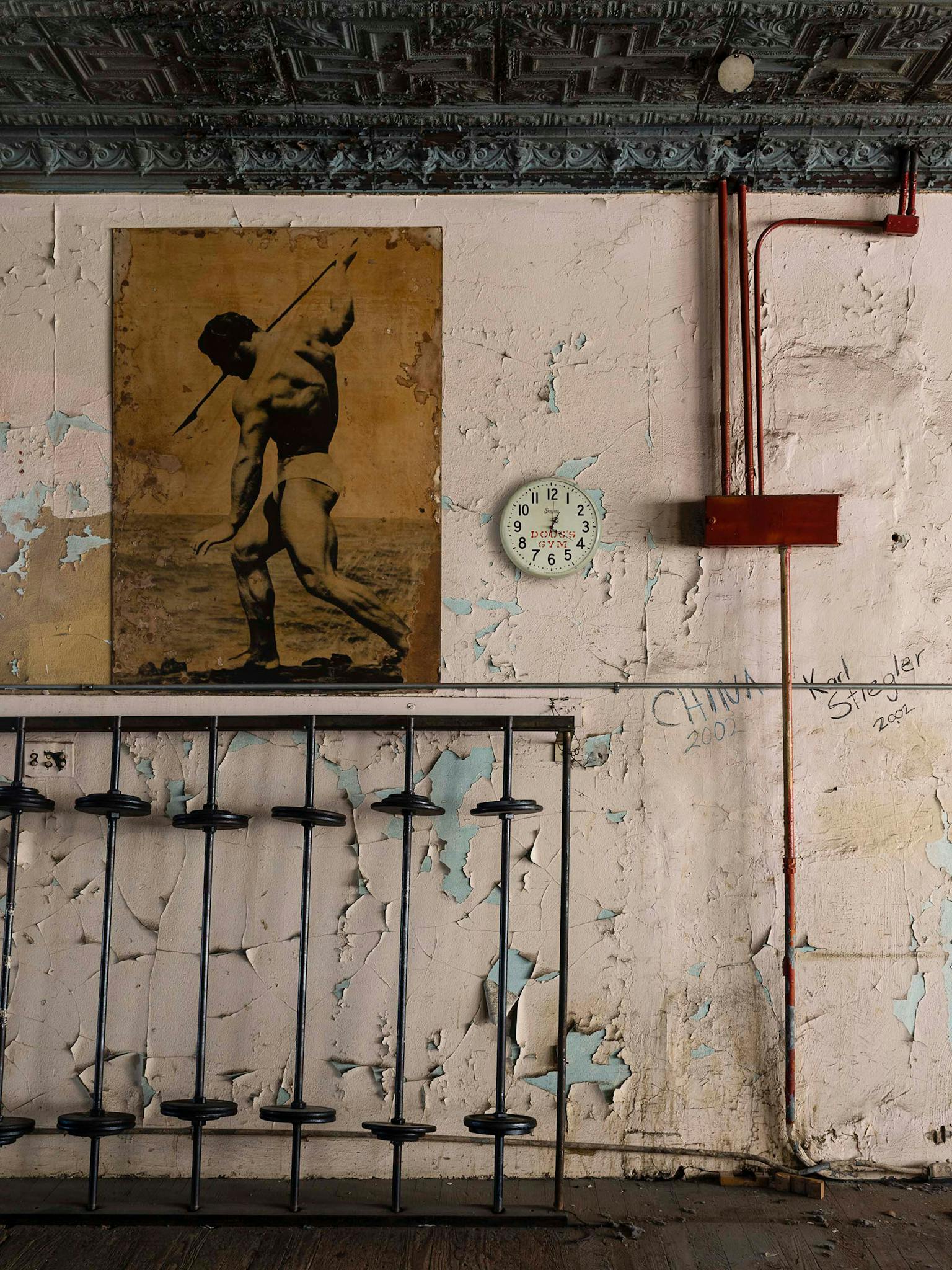
Of the more than three thousand pictures Diamond took, this is one of his favorites. There’s a starkness to the image, but mostly a sense of decay: the faded poster (of 1936 Olympian John Grimek), the fossilized floor, all that slowly peeling paint.
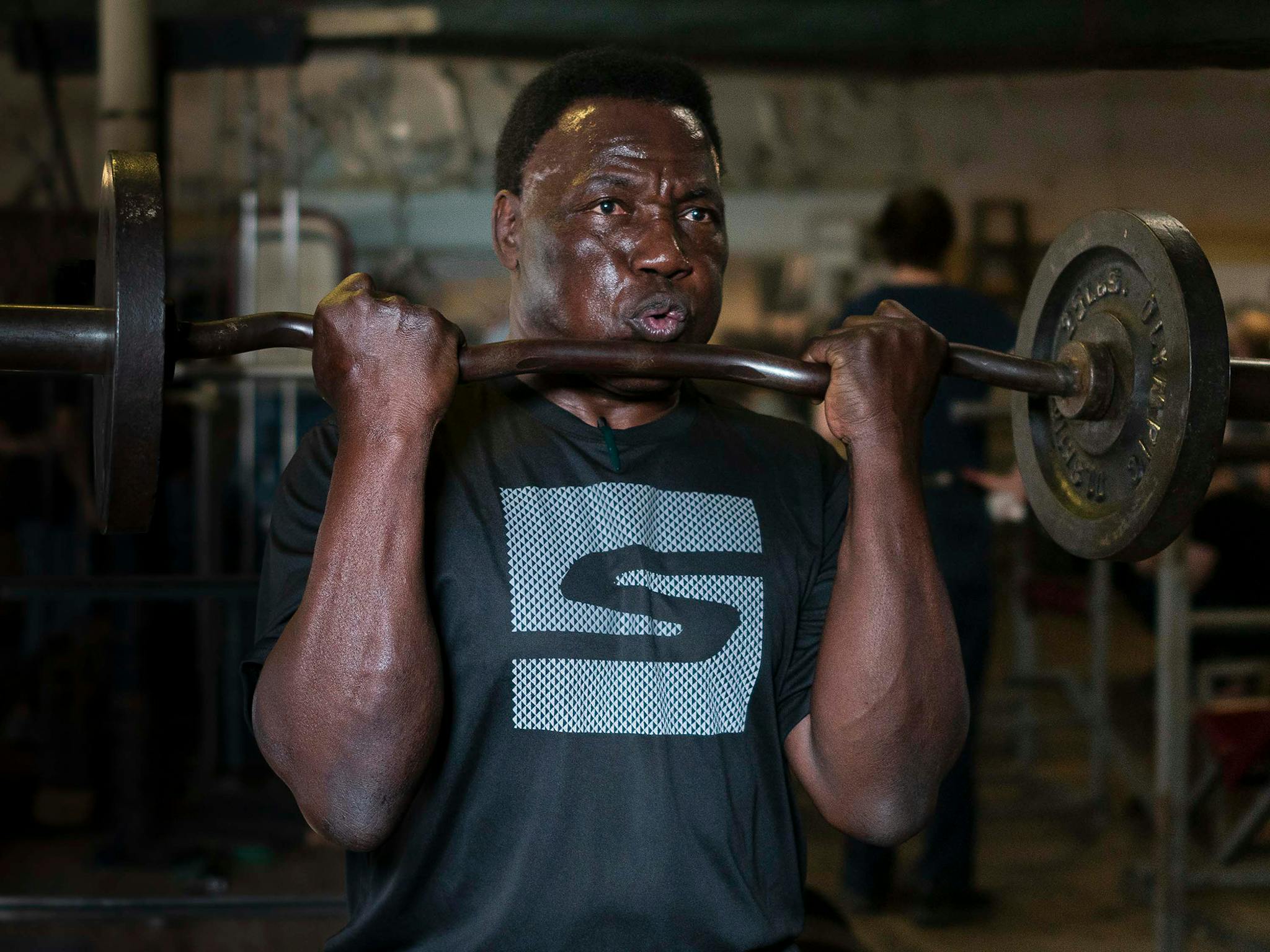
In its glory days, the gym drew boxers and bodybuilders, thanks to Doug’s reputation for results. (Eidd often recalled that a young Dwayne “The Rock” Johnson used to come with his father, a pro wrestler, on Saturdays.) Over time, as the neighborhood changed, the clientele became more diverse: Diamond, who worked out as part of his shooting agreement with Eidd, shared the equipment with a barber, a bellman from a nearby hotel, a T.S. Eliot scholar from SMU, and the owner of the Double Wide bar (“Drinks that hit harder than Dad!”), among others. But the no-nonsense atmosphere remained: “You didn’t dress to impress,” says Diamond. “You went there to improve yourself, to change.”
![“The dilapidation was pretty striking,” says Diamond. The locker area—populated by a worn bench and this chair held together by yards of duct tape—was no exception. The men’s bathroom, however, was even worse: “I showed my pictures of the men’s room, which was filthy, to my mentor [fine art photographer Cig Harvey], and she felt physical revulsion. She said, ‘You cannot put those in the book.’” (He did not.) There were no doors on the men’s or women’s bathrooms, just flimsy curtains separating them from the rest of the workout area.](https://img.texasmonthly.com/2020/02/Dougs-Gym-Dallas-Bill-Shapiro-8.jpg?auto=compress&crop=faces&fit=scale&fm=pjpg&h=1536&ixlib=php-3.3.1&q=45&w=2048&wpsize=2048x2048)
“The dilapidation was pretty striking,” says Diamond. The locker area—populated by a worn bench and this chair held together by yards of duct tape—was no exception. The men’s bathroom, however, was even worse: “I showed my pictures of the men’s room, which was filthy, to my mentor [fine art photographer Cig Harvey], and she felt physical revulsion. She said, ‘You cannot put those in the book.’” (He did not.) There were no doors on the men’s or women’s bathrooms, just flimsy curtains separating them from the rest of the workout area.

In addition to the grunting and clanking and thud-thud-thud of gloves on the heavy bag, a light cigar-smoke haze often hung in the gym, thanks to Eidd’s occasional puffing. “That’s actually a screwdriver he’s got in the butt,” says Diamond, who captured many such details. When the nub got too hot to hold, “he’d use whatever was available.”
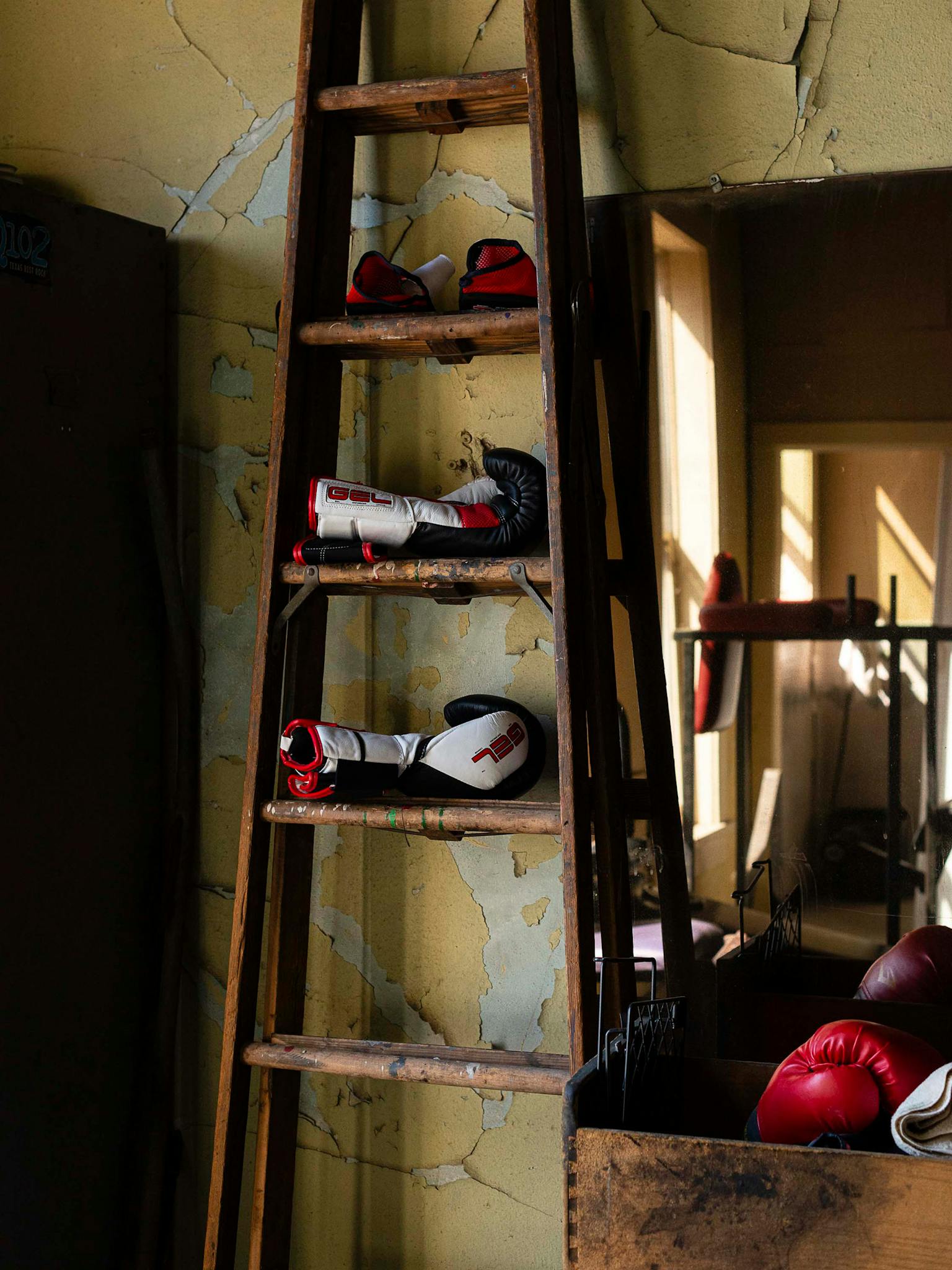
Diamond tended to shoot in the early afternoon, when the light filtering through the unwashed windows allowed his camera to capture the textures that came to define the space for him—the wood, the leather, the metal, and the curling paint—in a way that almost lets you feel them.
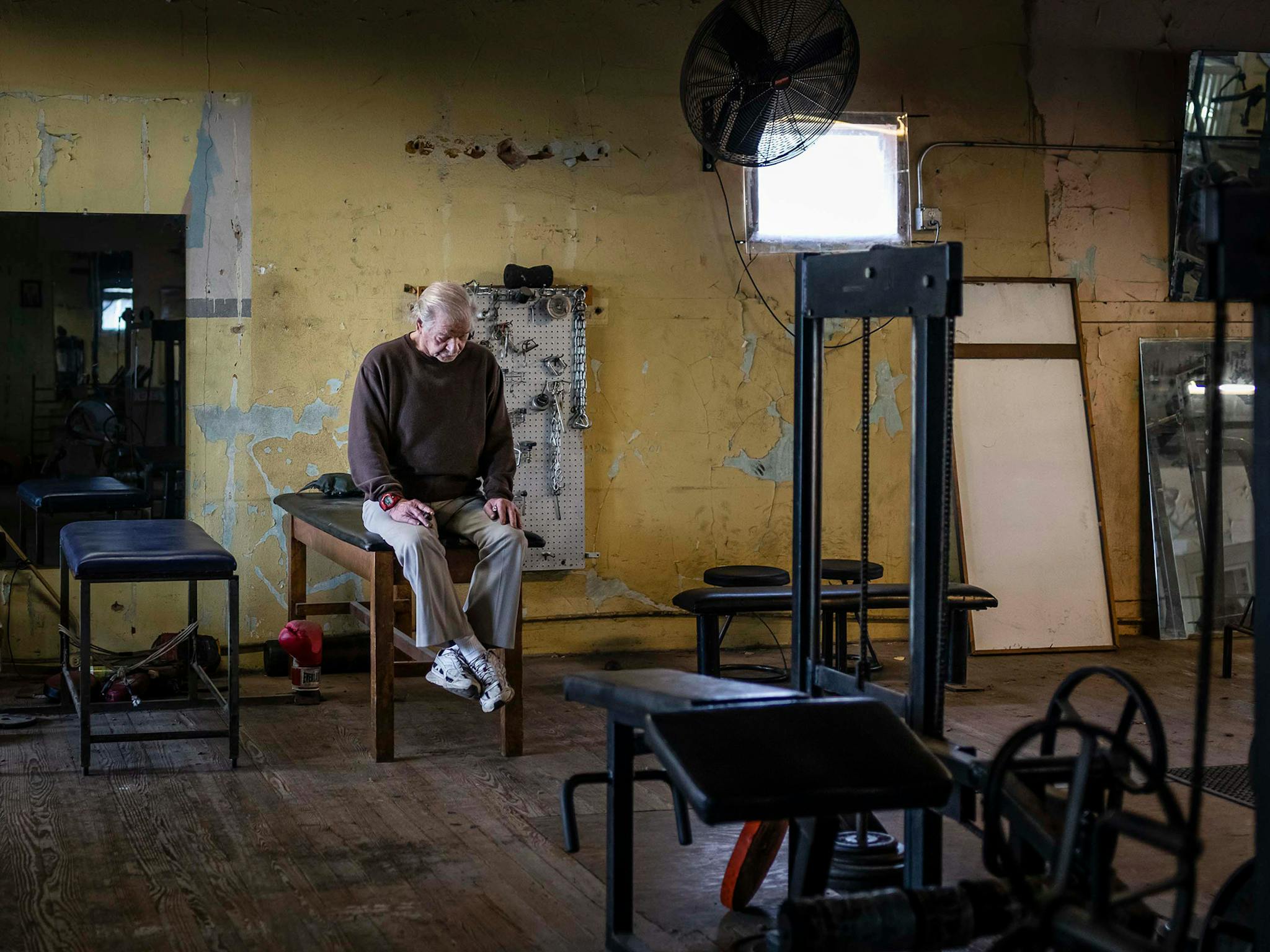
“I took that picture in the last weeks,” Diamond remembers. “Doug tried to put a bright spin on the gym closing, but I think I caught him sort of reflecting, coming to grips with the end of the road.” This was where Eidd had spent the vast majority of his life, walking the floor from 10 a.m. to 8 p.m. for nearly six decades. At the gym, Diamond found exercise equipment from the sixties, copies of Strength & Health magazine from the forties, and, in Eidd, the living embodiment of an era when people took a job and worked, with no side hustles, until they retired, coming to know every inch of the space and every possible facet of the job. “He was an incredibly good trainer and he cared deeply for what he did,” says Diamond. “They don’t make them like Doug anymore.”

Diamond’s final photo of the gym, taken on April 16, 2018, reveals the first time the space on Commerce Street had been empty since September 1962. A few of the regulars, including one old-timer who’d been working out there from the beginning, showed up to say goodbye as the last of the equipment was being dismantled. They came to show their appreciation for Eidd and for a place aggressively unconcerned with staying up to date, a place that helped people better themselves even as it continued to deteriorate. Eidd, now 89, had the equipment moved to the backyard of the home he shares with one of his sons, an hour outside of Fort Worth. In the warmer weather, some of Doug’s regulars stop by, work out, catch up. Downtown Dallas continues to change, but the second-floor space that once held Doug’s Gym sits empty. The sign still hangs where it always has, over the street, seemingly weightless.





